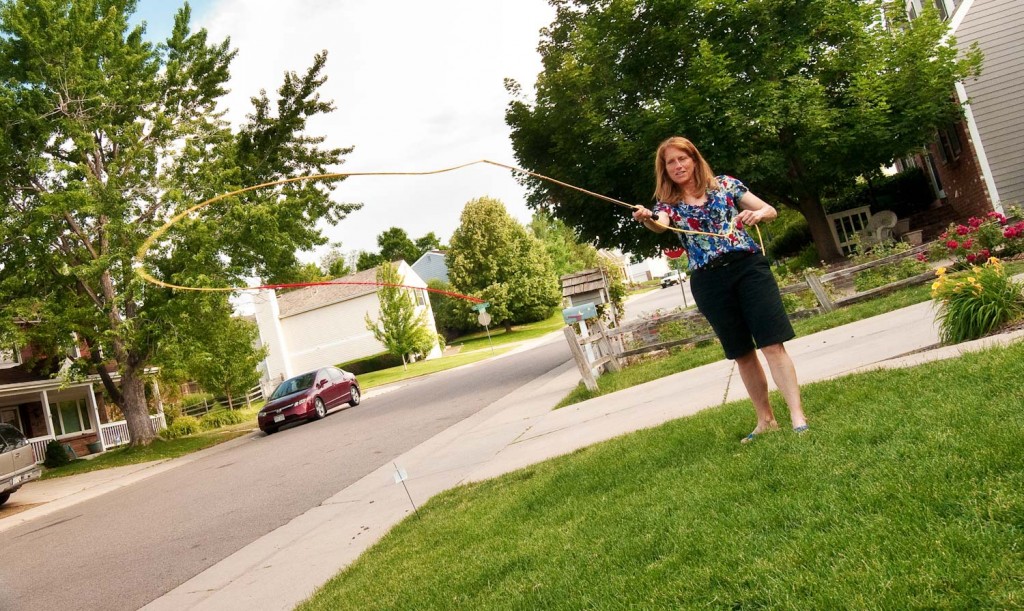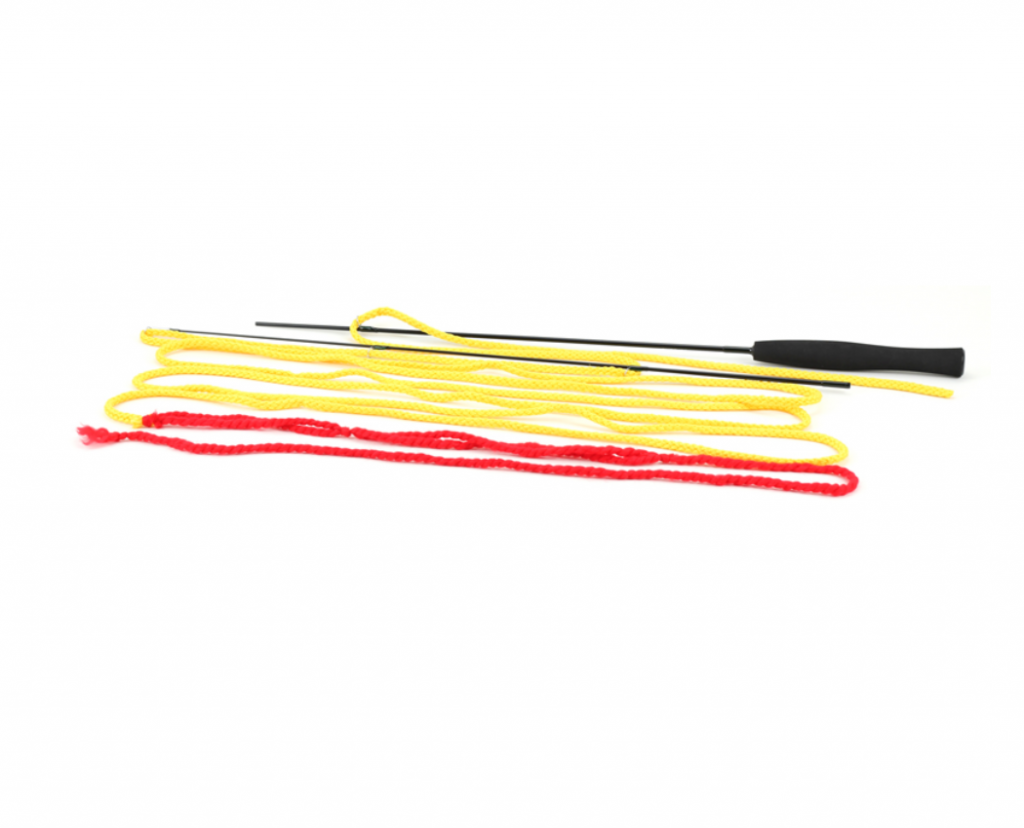No one is intimidated by a toy.
I’m an evangelist. A true believer, and like any zealot, there is nothing I love more than sharing my faith. I find myself teaching a lot of fly casting.
Whether you picked up a fly rod yesterday or twenty years ago I’m sure you remember how daunting it was at first. The learning curve can be brutal and more often than not the culprit is the fly rod itself.
For starters, it’s intimidating. Most people think of the fly rod as the tool of sorcerers. It is, right? Not the sport of the common fellow at least. This horse shit is part of the fascination that draws people to fly fishing but it’s also one of the big hurdles they have to clear in learning.
The next big hurdle is the preconceived idea of what the cast is. Almost everyone starts out casting a Zebco or some kind of gear rod and when they see a fishing rod, that muscle memory comes rushing back to ruin their fly cast. As soon as they are past the Zebco in comes Brad Pitt and “A River Runs Through It” and they start drawing huge circles in the air with rod and line.
I find that getting the new caster past the preconception of the cast is the most time-consuming part of the process. Some folks lose months or even years to this quagmire, and as anyone who fly fishes knows, learning to cast is just the price of admission. Learning to fish is another thing entirely.
Fortunately there’s a great new tool to help get past all of this. The Echo Micro Practice Rod or MPR from Rajeff Sports. Odds are you’ve seen one at the fly shop and maybe even cast it. You may have noticed the guys at the shop wasting a lot of time playing with it and your first impression was likely the same as mine. With its bright yellow rope “line” and red yarn “leader” it looks like a toy. It took me quite a while to realize that’s what’s so brilliant about it. It’s a toy! No one is intimidated by a toy. No one has preconceived ideas about a toy. They just play with it.
Toy or not, the physics at play are the same as an $800 fly rod. The action is slow and buttery and the line carries the energy of the rod gracefully. It rewards a clean casting stroke and shows off mistakes quickly. The feel of the load is pronounced and the visibility of the brightly colored line makes it easy to see what’s going on. The entire cast is slowed down so the caster and the coach can see exactly what’s happening. It’s remarkably intuitive and carries none of the baggage of the mystical fly rod.
Here’s how I use it to teach.
•First I explain the physics of the cast. I explain how the cast is symmetrical and the line follows the path of the rod tip. I lay the line out on the floor and show the student what a good loop looks like.
•Next I take some variables out of the equation. I start with the line on a wood or tile floor and demonstrate the casting stroke in two dimensions. I show how a big arch in the casting stroke makes a big loop and piles up the line. I show how a short linear casting stroke makes a tight parallel loop. Then the MPR goes into the students hand. They repeat the exercise on the floor, where they can see everything happen and keep gravity out of the mix. At this point I introduce the idea of a smooth acceleration to an abrupt stop. It doesn’t take long before they understand that they are loading the rod, not throwing the fly.
•Next we cast in the air, but side arm with the rod parallel to the floor. The reason I do this is that it’s easy for the caster to see the entire stroke. Most beginning casters do not have a symmetrical stroke, but are unaware because they can’t see it. Casting sidearm reveals the stroke and lets them see the line straighten out on the back cast, which helps with timing. It also requires that the caster put an ample amount of energy into the line, teaching them not to have a lazy stroke. Once they have a feel for how much energy it takes to keep the line moving in a plane parallel to the floor we move to a vertical casting position.
•By this time the student is usually making nice loops with the MPR and we can work on laying the line out nice and straight and hitting a target. I have found that the best thing for practicing this is a family pet. A cat or dog makes a great target and rewards the caster with a reaction when hit with the harmless yarn leader. Again, it’s a game and it’s fun, not intimidating. This is especially good for kids.
•Only after all of this is accomplished I hand the student a real fly rod. I like a slow action rod for teaching and usually over line it by a weight so the student really feels the load. It’s not uncommon to find that after less than an hour with the MPR, I have them making nice clean loops at thirty or forty feet and no one is feeling intimidated or thinking about the Zebco.
The MPR retails for $39 and I think it’s a deal. The only problem is that I keep giving them away! I swear I’m keeping the next one. If you have someone you’d like to teach to fly cast try this method. You’ll be surprised how quickly they pick it up. If you’re a new caster get a MPR for yourself. Cast it for a few minutes every day. You’ll be amazed how it cleans up your casting. Let your friends laugh at your toy rod. You’ll be the one laughing on the river.
Louis Cahill Gink & Gasoline www.ginkandgasoline.com hookups@ginkandgasoline.com Sign Up For Our Weekly Newsletter!


I think I predict a video of this process Louis ….
We just need to get one for you with 120 foot rope.
When I was still teaching natural resource management I taught students how to cast starting with a dowel rod and a piece of yarn attached to the end. A great means of teaching basics.
How did you feel the dowel load?
The load of the dowel is strong!
Wulff had his for a long time, no?
http://royalwulff.com/products/royal-wulff-fly-o/
Last time I was killing time with a buddy of mine who works in a shop we thought it would be a fun rod to string a real line through and take to the creek.
Any idea what line weight that rope is?
That’s a good question. I think there’s more to that yarn than weight. Let me know if you find a line that works on it.
Pingback: Choosing a Fly Rod is Like Choosing a Guitar | Fly Fishing | Gink and Gasoline | How to Fly Fish | Trout Fishing | Fly Tying | Fly Fishing Blog